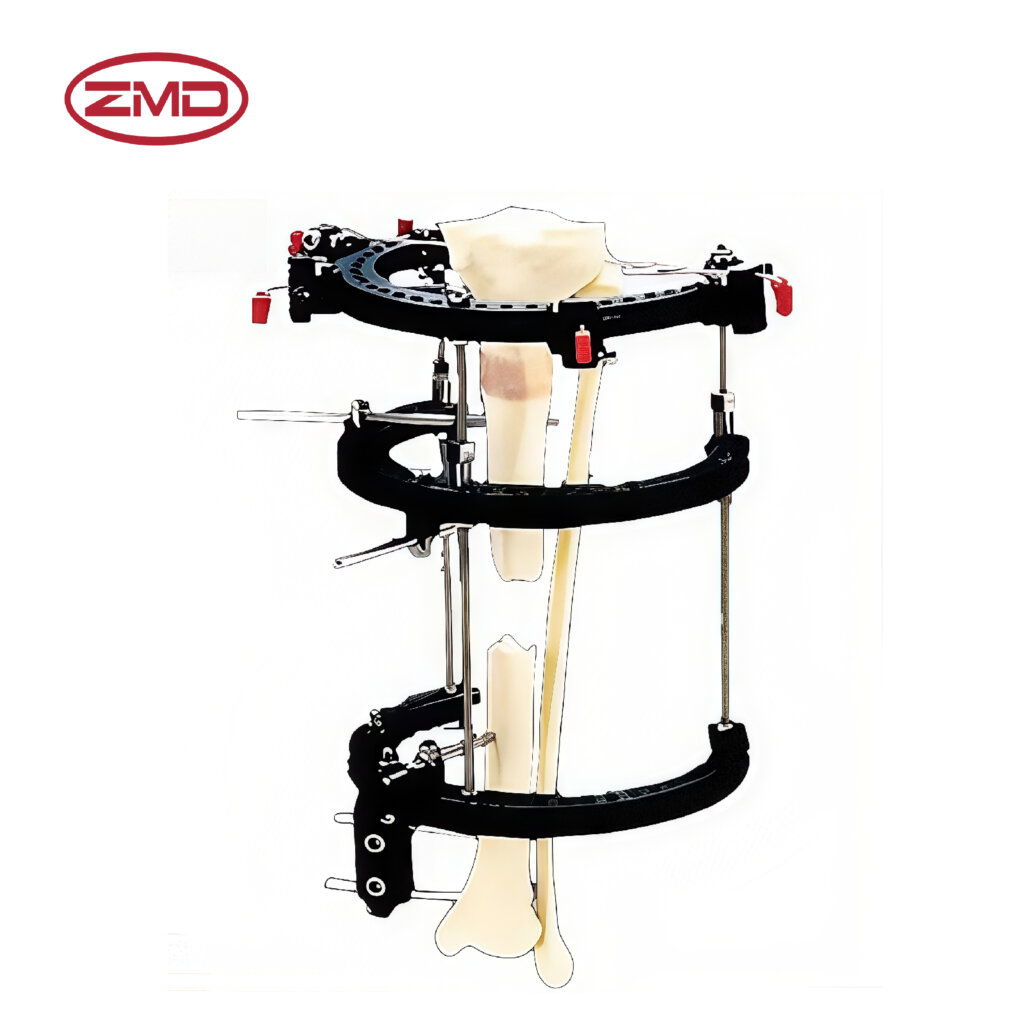
- Home
- About Us
- Products
- Trauma Internal Fixation System
- Spinal Internal Fixation System
- External Fixation
- Artificial Implants System
- Sports Medicine
- Power tools
- VSD System
- Instruments
- Medical supplies
- Blog
- Personnel Profile
- Contact Us
Phone line
| CODE | PRODUCTION | DESCRIPTION | MATERIAL |
| ZJ106 | Pennig Minifixator Clamp Locking Screw | / | S.S |
The locking screw is typically made of high - quality metal. This metal is selected for its durability, as it needs to withstand the forces exerted on it during orthopedic procedures and the extended period of use. The material also ensures that the screw maintains its structural integrity and functionality over time.
With proper training and tools, it can be relatively easy to install. The installation process requires a certain level of skill and knowledge about the Pennig Minifixator system. However, once the medical staff is familiar with the correct procedure and has the appropriate tools, they can efficiently install the locking screw.
In some cases, it can be adjusted if needed. The adjustability of the locking screw allows for modifications to the fixation as the treatment progresses or as the patient's condition changes. This flexibility is an important feature for ensuring optimal orthopedic treatment
The locking mechanism is designed to be very strong and reliable. It is engineered to withstand the forces that could potentially cause loosening, such as the movement of the patient or external pressures. This strength is crucial for maintaining the stability of the fixation throughout the treatment period.
There may be different sizes available to fit various minifixator models. The availability of different sizes provides flexibility to match the specific requirements of different orthopedic setups and patient anatomies.
Depending on its condition, it may be reusable in some cases. After proper cleaning, sterilization, and inspection to ensure that its structure and functionality are intact, the locking screw might be suitable for reuse. However, this decision usually depends on the hospital's protocols and the specific circumstances of each case
It has a specific design that resists loosening even under stress. The details of this design may include features such as a threaded structure with a tight fit and a locking mechanism that engages securely to prevent the screw from turning or coming loose during normal use and movement
It is designed to be compatible with specific Pennig Minifixator clamps. The locking screw's dimensions, threading, and other design characteristics are tailored to work with the corresponding clamps of the Pennig Minifixator system and may not be suitable for other types of clamps.
With proper care and use, it can have a long lifespan. The lifespan depends on factors such as the frequency of use, the forces it is subjected to, and the quality of maintenance and sterilization procedures. In an ideal situation, a well - maintained locking screw can serve effectively for multiple procedures.
It is specifically designed for the Pennig Minifixator and may not be suitable for other devices. The unique design and functionality of the locking screw are optimized for the Pennig Minifixator system, and its compatibility with other orthopedic devices would likely be limited due to differences in design and requirements.
Oh yeah! I have to mention their payment options and discount offers, which are awesome! Those payment methods are as flexible as moving water and can be chosen freely according to our cash flow situation. And the frequent discounts, like a timely rain, have been moisturizing our financial statements time and again, and have had a rocket-like positive impact on our profits! With ZMD, I feel relaxed and at ease when it comes to purchasing!
Send us a message if you have any questions or request a quote. Our experts will give you a reply within 24 hours and help you select the right valve you want.
Book Now
If you are looking for professional orthopedic medical product solutions, don’t hesitate to contact us now!

We are an integrated manufacturer specializing in orthopedic medical industry, providing high quality and reliable orthopedic medical products to customers worldwide.
Copyright © 2024 ASK Project